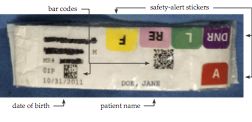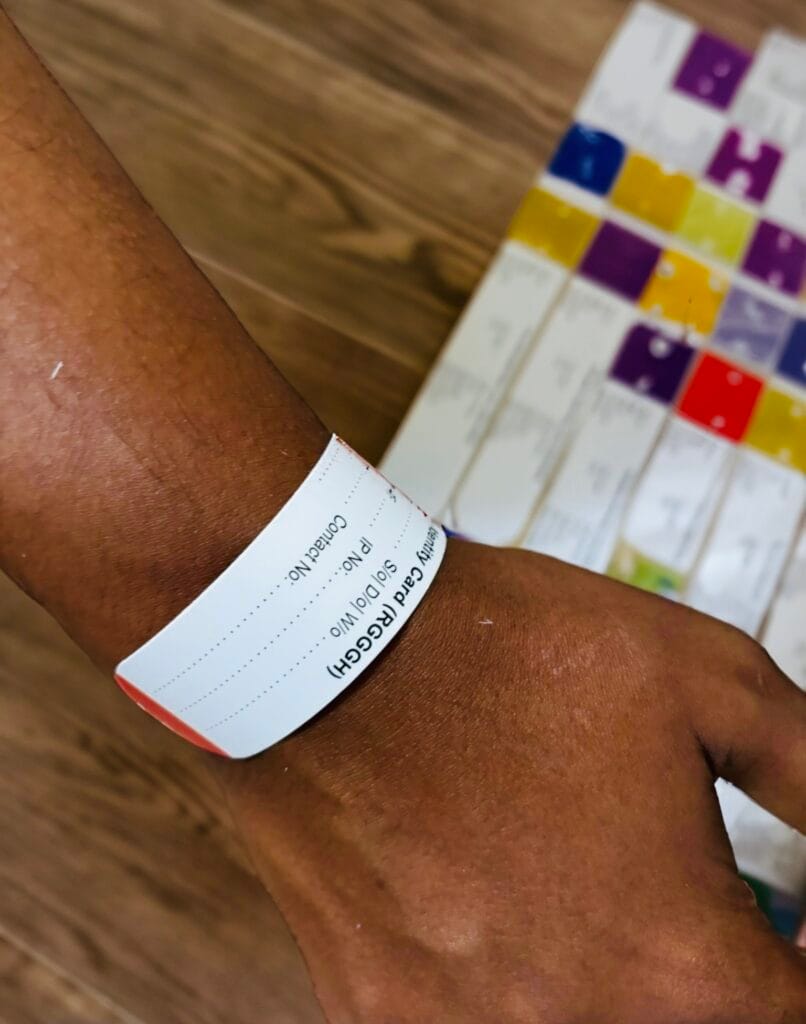Enhancing Person Treatment With Reliable Recognition Bands
The implementation of reliable identification bands is a pivotal element in enhancing person care within health care setups. These bands not just offer to minimize the threats connected with client misidentification yet likewise simplify interaction amongst clinical employees, thus promoting a more secure atmosphere. Numerous sorts of identification bands accommodate specific demands, from sturdy wristbands for adults to specialized bands for babies and crucial instances. As the landscape of person recognition develops, one have to take into consideration the ramifications of these systems on overall medical care distribution and client outcomes. What technologies wait for in this essential location?
Relevance of Client Identification
Making sure exact patient identification is crucial in medical care setups, as it directly affects the safety and security and quality of care provided. Misidentification can cause significant errors, consisting of administering the incorrect medication, performing wrong treatments, or miscommunicating vital client details. Such mistakes not just endanger person safety and security but can likewise result in lawful ramifications and reduced count on health care systems.
Reliable individual recognition is essential to developing a protected environment where people get ideal and personalized care. It helps with the exact paperwork of case histories, allergic reactions, and therapy strategies, making certain that doctor have access to important information in all times. Additionally, durable identification protocols aid improve interaction among clinical staff, enhancing partnership and decreasing the risk of blunders.

Kinds Of Identification Bands
Identification bands play an essential duty in preserving accurate person documents and enhancing safety within healthcare settings. Various types of identification bands are utilized to cater to the specific requirements and needs of different client populations.

An additional type is the ankle band, which is especially beneficial for infants and newborns, making sure that recognition stays intact even during care procedures. Specialized bands, such as those for allergic reaction alerts or fall danger indicators, provide extra layers of security by attracting immediate interest to essential person conditions.
Lately, digital recognition bands have acquired appeal, including barcodes or RFID technology that can be scanned to rapidly obtain individual information. These bands streamline workflows and decrease the threat of human mistake throughout individual recognition procedures.
Benefits of Efficient Identification
Efficient recognition of individuals with making use of recognition bands adds considerably to total individual security and care quality. By ensuring that each person is precisely determined, health care suppliers can successfully match medical therapies and procedures to the appropriate person, lessening the threat of errors. This is specifically essential in settings with high person turn over, where the capacity for misidentification is better.
Furthermore, effective recognition bands boost interaction amongst health care groups. Clear and accurate patient identification cultivates partnership and ensures that all staff member are conscious of a client's details needs and case history. This interaction is essential for supplying coordinated care, particularly in emergency situation circumstances where time is critical.

Ultimately, efficient recognition via using recognition bands not only safeguards people yet additionally promotes a society of safety and security within health care facilities (Patient Identification Band). By focusing on precise recognition, health care companies can enhance end results and improve the general person experience
Applying Identification Equipments
While the relevance of individual identification is well acknowledged, the execution of robust recognition systems postures a complicated challenge for medical care organizations. Developing reliable identification systems calls for a comprehensive strategy, encompassing modern technology, workers training, and procedure assimilation.
First, organizations should choose ideal identification technologies, such as barcode scanning, RFID, or biometric systems. Patient Identification Band. These innovations need to be examined based upon price, use, and compatibility with existing infrastructure. A pilot program can assist determine potential issues before full-blown application
Next, comprehensive training best site for team is important. All workers must understand the relevance of accurate patient identification and be skilled in the use of the chosen technologies. Regular training updates and assessments can enhance best techniques and make sure continued conformity.
Additionally, health care companies should develop standard procedures for patient recognition throughout all divisions, decreasing disparities and enhancing communication. Regular audits can aid recognize voids in adherence to these procedures.

Inevitably, an effective application of recognition systems not only improves individual safety but also fosters a society of responsibility and persistance within health care setups, making sure trusted and regular person care.
Future Trends in Person Identification
Advancements in modern technology are set to revolutionize individual recognition methods in health care settings. The assimilation of biometric identification techniques, such as fingerprinting and face recognition, is expected to boost accuracy and safety. These modern technologies can considerably decrease the threat of misidentification, making sure that patients get the appropriate therapies and drugs.
Additionally, the application of blockchain modern technology for client documents is obtaining grip. This decentralized approach can supply a safe and secure and tamper-proof method for managing client identities, therefore improving access to important info throughout different health care carriers.
One more fad is the enhancing use mobile health applications that leverage QR codes for client recognition. These applications allow for real-time updates and easy access to individual data, equipping health care specialists to make enlightened decisions quickly.
Additionally, expert system (AI) is poised to play a key duty in evaluating patient identification information, recognizing patterns, and anticipating possible recognition mistakes before they take place.
As these modern technologies a knockout post progress, they promise not just to improve individual safety but also to enhance the overall performance of medical care shipment systems. Embracing these technologies will certainly be critical for future-proofing person treatment methods.
Conclusion
To conclude, effective identification bands are important for improving individual security and care high quality within medical care settings. By decreasing the threats related to misidentification, these bands assist in prompt and exact info access, inevitably boosting interaction amongst doctor. The implementation of durable identification systems not just fosters a society of security however also positions healthcare establishments to adapt to future patterns in client identification innovation, making certain optimal outcomes for patients in varied clinical environments.
As the landscape of individual recognition develops, one need to think about the ramifications of these systems on overall healthcare shipment and individual outcomes.Efficient client recognition is basic to establishing a secure setting where people get tailored and suitable care. Ultimately, prioritizing reliable person identification methods not only fosters a society of security yet likewise adds to enhanced client end results and overall fulfillment with healthcare solutions.
Effective identification of clients through the use of recognition bands contributes dramatically to general client safety and security and care quality. The implementation of robust recognition systems not only promotes a culture of safety and security however likewise settings healthcare institutions to adapt to future fads in patient recognition innovation, ensuring optimal results for patients in diverse professional atmospheres.